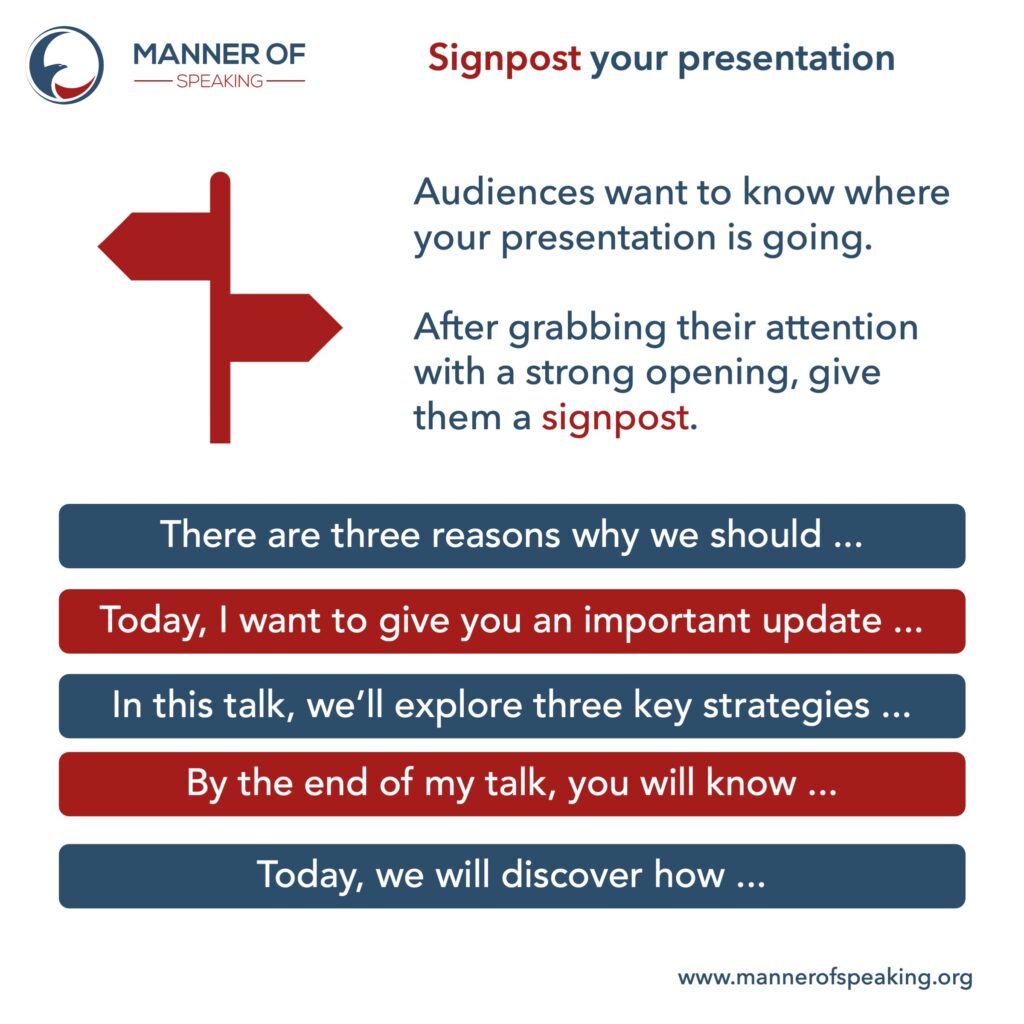
The brain wants meaning before detail. That’s why you need a signpost.
When it comes to presentations, speakers often jump straight into the details—and keep adding more details—before properly setting the context. (If, in fact, they ever get around to setting the context.)
And for an audience, it is incredibly frustrating because an audience wants to know where you are going. They want to know what is in it for them and, therefore, why they should give you their time.
Have you ever been in the audience and wondered:
𝙒𝙝𝙚𝙧𝙚 𝙞𝙨 𝙝𝙚 𝙜𝙤𝙞𝙣𝙜 𝙬𝙞𝙩𝙝 𝙩𝙝𝙞𝙨? 𝙒𝙝𝙖𝙩’𝙨 𝙝𝙚𝙧 𝙥𝙤𝙞𝙣𝙩?
Like I said, frustrating.
Fortunately, the solution is simple:
🪧 Have a signpost 🪧
Immediately after hooking your audience’s attention with a strong opening—something about which I have written in the past—tell them where you are going with the speech or presentation.
It is not hard to do. In fact, your signpost need only be one or two sentences.
Here are some examples:
🔹There are three reasons why we should open an office in Singapore: a favourable tax structure; a highly skilled workforce; and proximity to our Asian clients.
🔹Today, I want to share with you the benefits of going for a daily, 30-minute walk.
🔹We know that we need to develop new business. Today, we’ll look at the most promising way to do that and how we will make it a reality.
In each of the examples above, the audience will quickly understand where the speaker is going. You can find other examples are in the image above.
You wouldn’t go on a journey without knowing the destination. When you speak in public, you are taking the audience on a journey. Give them a signpost so that they know where you are taking them.
They deserve to know the destination.















